How Technology Can Impact Revenue Cycle Success
Effective revenue cycle management starts with the pre-visit process and runs all the way through to final payment. Naturally, patient care is the primary focus of any successful dental practice, but effective revenue cycle management keeps the doors open and the lights on, therefore it is an essential component that cannot be ignored.
One way to be more effective at revenue cycle management is to implement technology to automate office processes. The following is a look at how implementing technology, such as practice management systems, email encryption, and electronic claims and attachment solutions can result in an immediate boost to your practice’s bottom line.
Improved communication – With technology like dental practice management software, email encryption and electronic claims and attachments working for you, your end-to-end communications are more secure, more accurate, and highly trackable. This benefits everyone involved in your revenue cycle, resulting in faster claim processing and reimbursement from payers as well as and improved treatment acceptance and payment from your patients.
Increased efficiency – By moving away from manual, paper-based or less automated digital processes, your staff can free up time to focus on other tasks such as researching industry trends and new service offerings, new marketing opportunities, and of course, devote themselves to providing better patient service.
Eliminate paper – Printing and chasing paper documentation is not only time-consuming and bad for the environment, but it opens you up to human error, lost or unreceived communications, additional paperwork, issues with faulty or lagging mail service, and more. Errors can mean claim denials and delayed payments which can shoot your accounts receivable (AR) through the roof. The industry is transforming into one that rapidly accepts technology to enhance the profession and leave the paper behind.
Minimal disruption – Today’s technology options are more user-friendly and require minimal setup or technology team intervention. For example, email encryption solutions often let you continue to use your existing email address and email platform making it easy for your practice to get up and running, with minimal training required for your staff. Increased support from technology vendors can make the transition seamless. As with any technology, the end-user experience is also crucial. Today, there are even encrypted email solutions that make it simple for the recipient to access and open an encrypted message without having to create yet another account and login to clutter their workflow.
Cost savings – Finding a technology provider that offers multiple technology offerings can provide savings to your dental practice. When you work towards digital automation, your practice can save thousands over what you might spend on paper, mailing, and even hourly pay for staff as they require more time to complete tasks. Consolidating vendors for services like claims, attachments, and encrypted email means cost-savings for you; and, as a bonus, having a single service provider means better customer support and less phone or web inquiries taking up your staff’s valuable time.
Risk reduction – In the world of oral health care, there is plenty of room for error specifically related to billing processes that directly affect the revenue cycle. Claim forms and attachments that are mailed in get “lost”. Patient payments may be dropped “in the mail” yet never received, and the list goes on. For every manual process or task performed by your staff, there is a chance of incorrect information being shared or submitted that can cause delays in case acceptance, slow payments, and diminished patient satisfaction. When it comes to patient communications, utilizing technology can also ensure your practice communicates in a more compliant manner. With a major focus on Protected Health Information (PHI) and HIPAA regulations, no practice can afford to have a data breach. A data breach no matter the size, is a breach of patient trust, a blow to your business’ reputation and can cost thousands of dollars to you and your employees. Why jeopardize all of that when there are simple technology solutions that you can easily put in place to help mitigate your risk?
Faster payments – With electronic transmission and retrieval of requested records you can receive documentation and images in minutes versus days when using manual methods, resulting in an improved revenue cycle. Many practices that are using technology to support their claim submissions, communications and claim attachments see their claims accepted faster and they get paid within two weeks. More advanced claim software can also provide near-real-time feedback at the time of claim submission to let practices know if there are any issues with the claim, i.e., missing information, before the claim is submitted. By empowering your practice with this information prior to claim submission, the errors can be fixed in advance saving time and money.
Simplicity – Once you are up and running with the right technology for your back-office, the first people to benefit are your team members. With minimal training, they can immediately see how simple it can be to manage back-office tasks like insurance billing. Your patients, payers, and other providers will quickly see the benefits, too. Patients will notice the seamless organization of their visits and will appreciate the enhanced security of the communications you send. Payers prefer electronic communications related to claims and attachments because it makes their work easier, and other referring providers appreciate the efficiency with which your practice electronically manages referrals using more secure communication methods than outdated faxes or letters.
All dental practices want to increase their cash flow and reduce the time spent on back office tasks, all while increasing the service level they provide to patients. Adopting technology solutions will pay for itself and more in dividends, and everyone in your revenue cycle management workflow will quickly experience the benefits.
The dental industry is transforming into one that rapidly accepts technology to enhance the profession, and while many dentists are on-board with utilizing new clinical technologies in care of their patients, the work they do is still being billed for and collected via outdated, manual paper processes fraught with risk and inefficiencies. Technology adoption is a hurdle that we encourage dental practices to fully embrace now because the longer practices wait to move forward, the further they will fall behind. In today’s competitive oral health care market, providers need to take action to run their businesses efficiently so that they can continue providing the high levels of care their patients expect and deserve.




